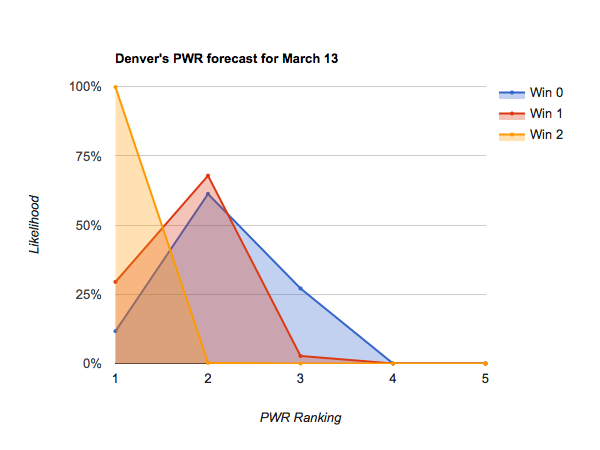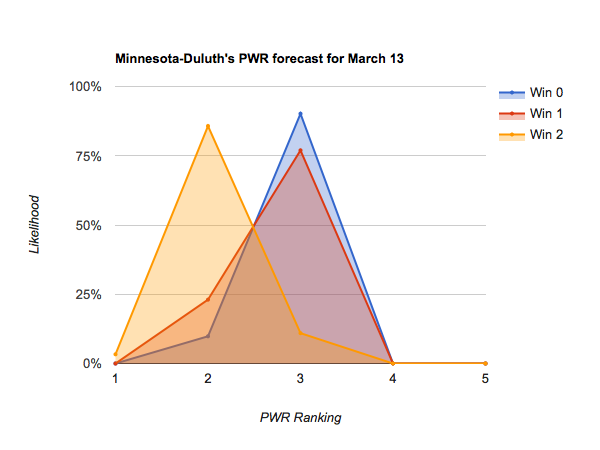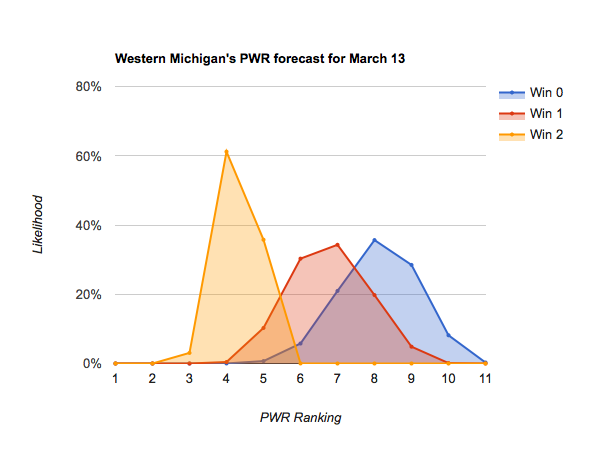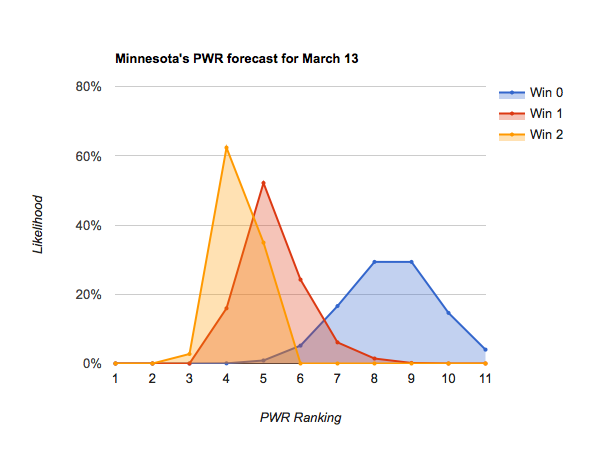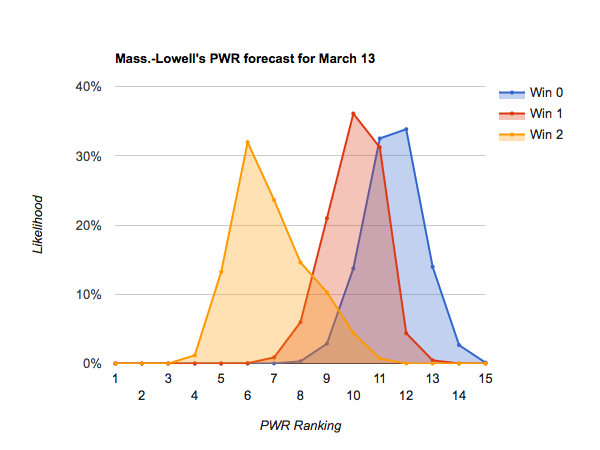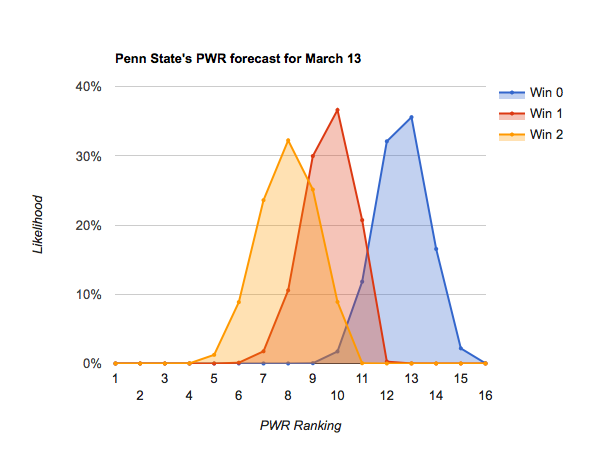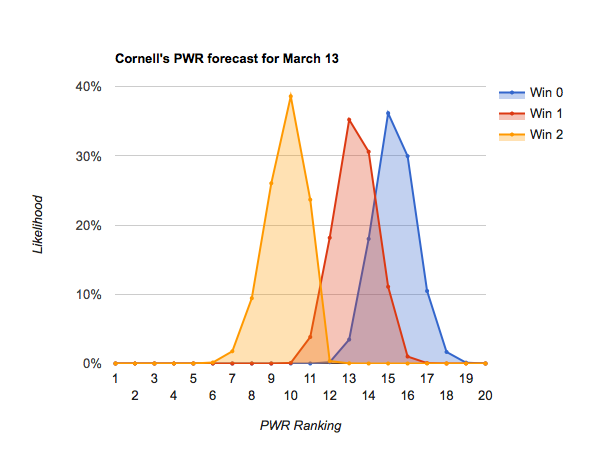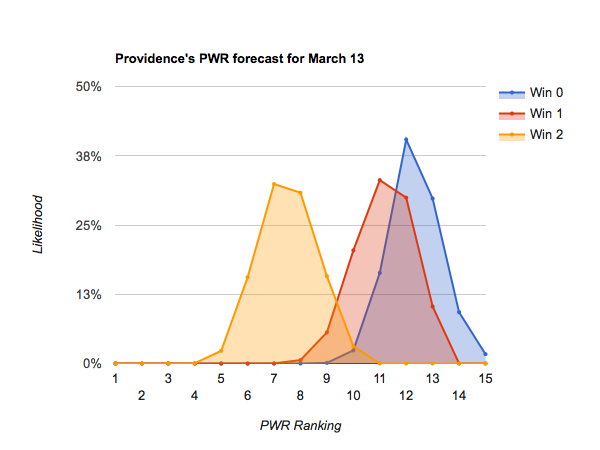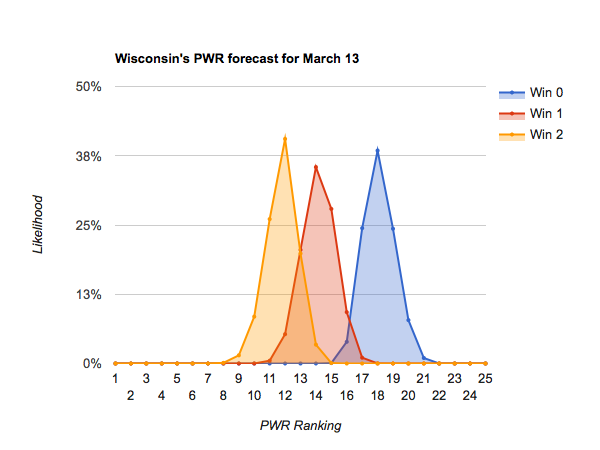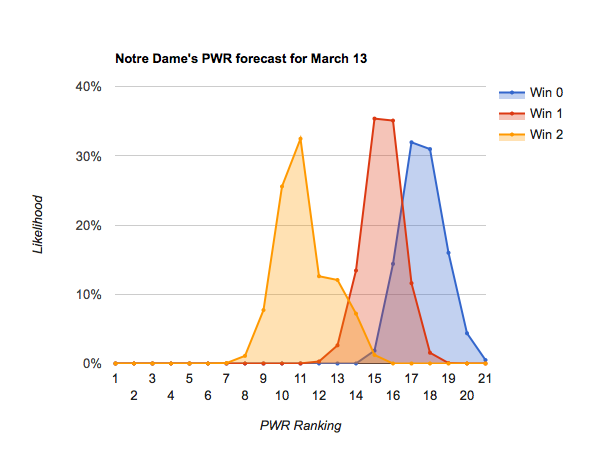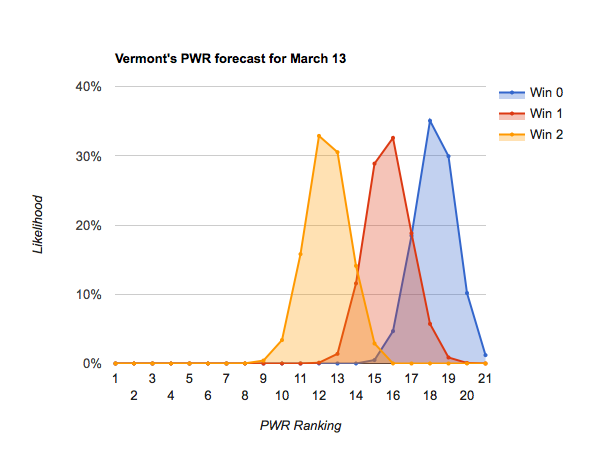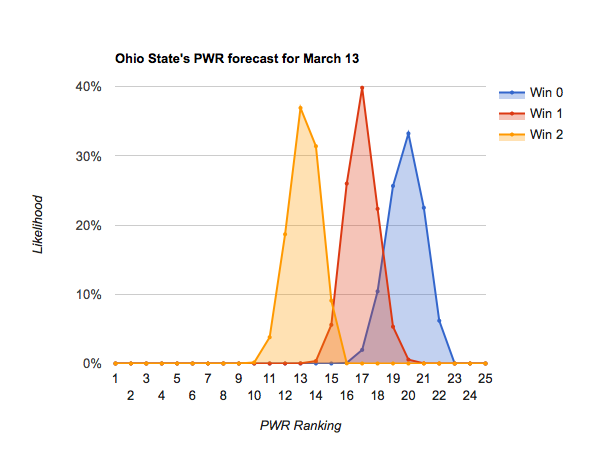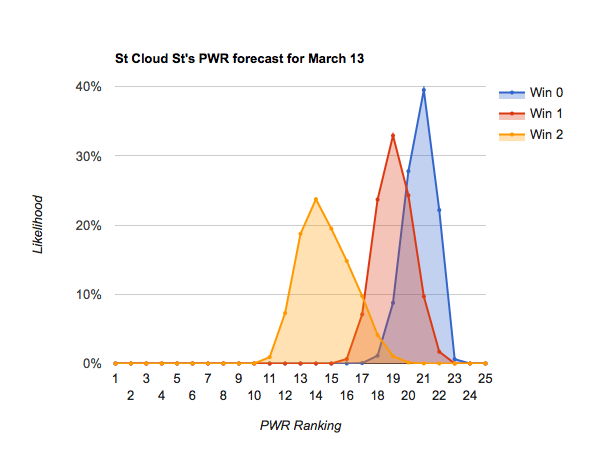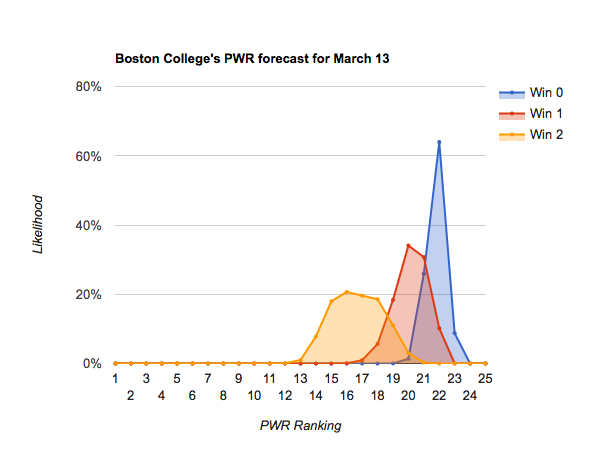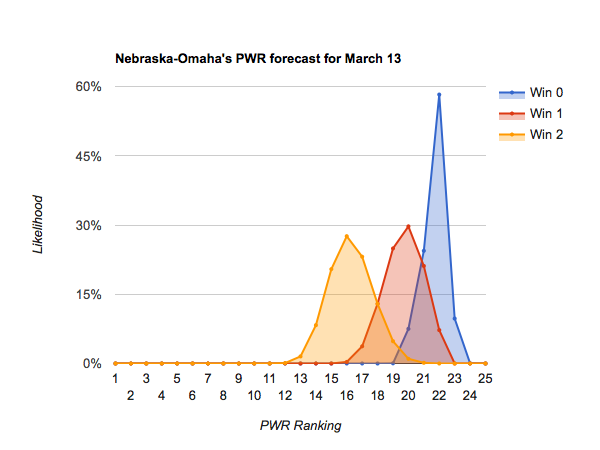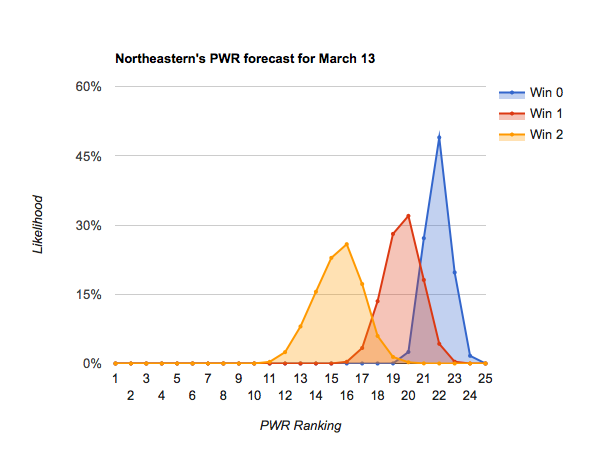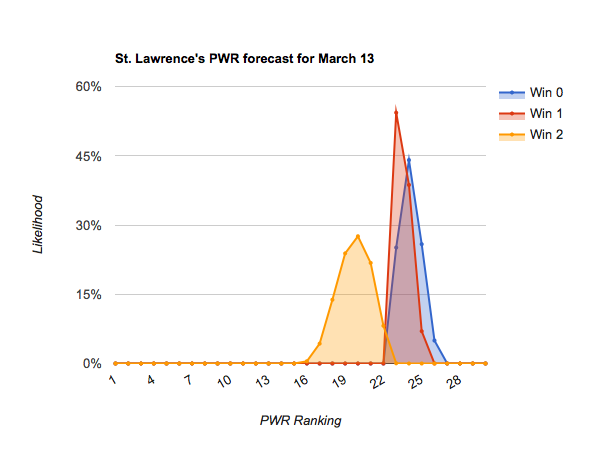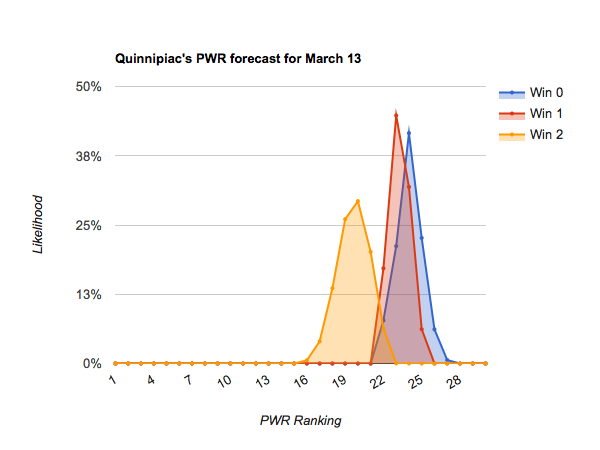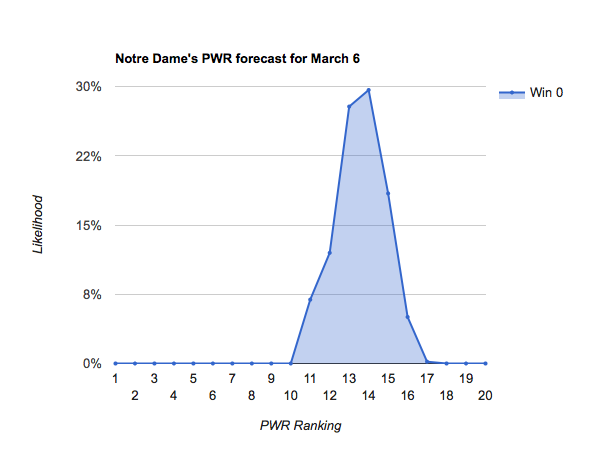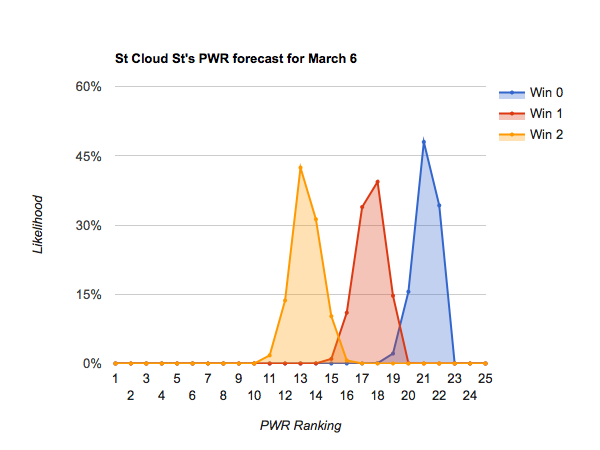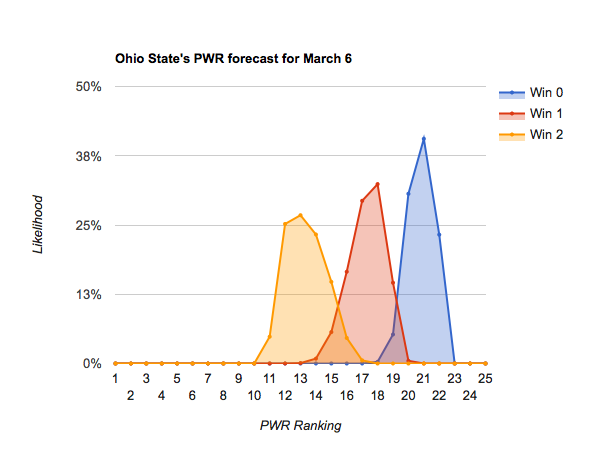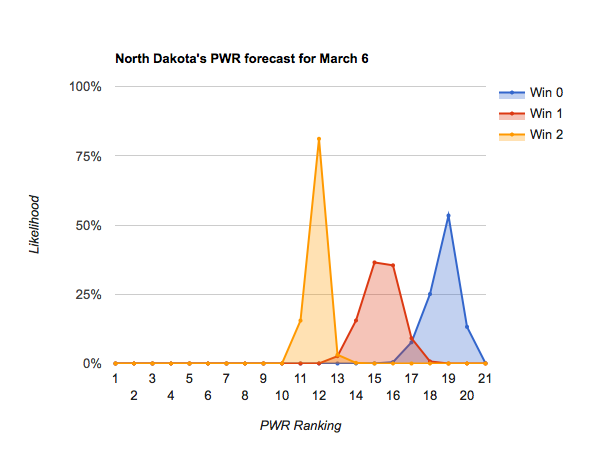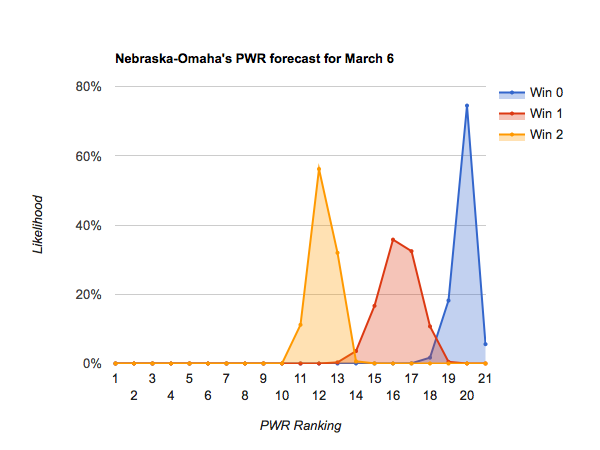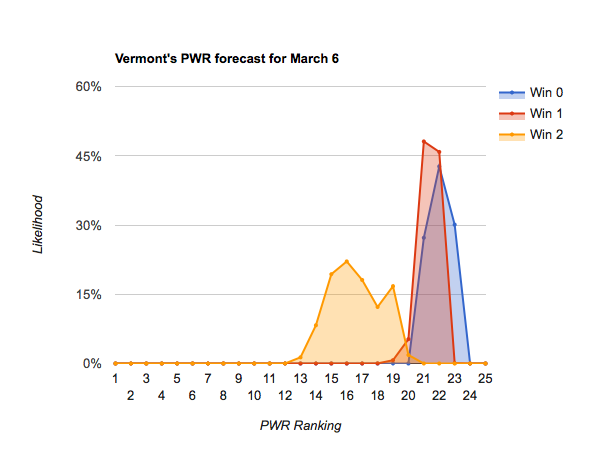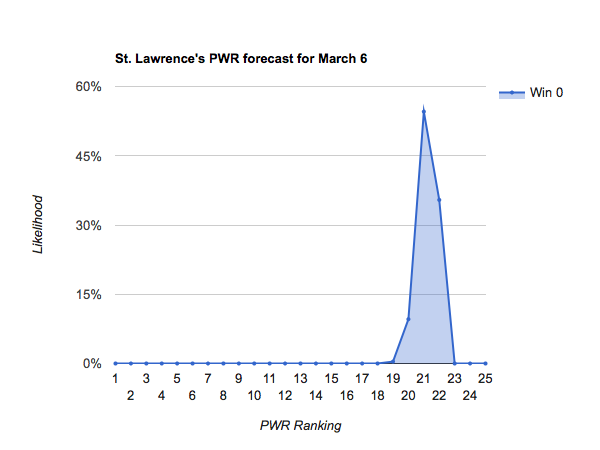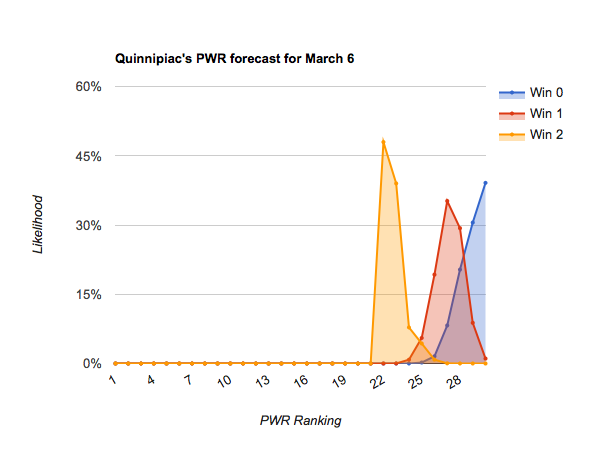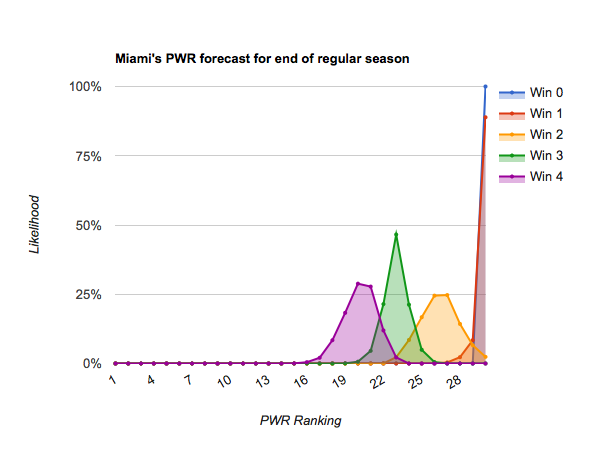| 1 | 2 | 3 | 4 | 5 | |
| Atlantic Hockey | 91% | 9% | |||
| Big Ten | 3% | 46% | 50% | ||
| ECAC | 1% | 77% | 23% | ||
| Hockey East | 1% | 73% | 26% | ||
| NCHC | 4% | 96% | |||
| WCHA | 100% |
Atlantic Hockey
Only the auto-qualifying winner of the conference tournament is in for sure, from #15 Air Force, #25 Canisius, #26 Robert Morris, and #34 Army. Air Force could also sneak in at-large even if they don’t win the conference tournament.
Big Ten
#5 Minnesota is in for sure, but the Big Ten is very unlikely to have the Gophers as their only representative. 5 other teams (#13 Penn State, #14 Ohio State, #18 Wisconsin, #36 Michigan, and #47 Michigan State) are also still vying for the conference tournament championship and its automatic bid. Of those, Penn State and Ohio State each stand a decent chance of making it at-large, particularly if they win a game or two.
ECAC
#3 Harvard and #7 Union are in for sure, but the ECAC is also quite likely to have additional representation. #9 Cornell and #20 Quinnipiac are also vying for the conference tournament championship and its automatic bid. Cornell stands a very good chance of getting an at-large bid.
Hockey East
#6 Boston University and #8 Mass.-Lowell are in for sure. Idle #12 Providence is also very likely (about 96% of remaining scenarios) to make the NCAA tournament at-large. #10 Notre Dame and #16 Boston College are also vying for the conference tournament championship and its automatic bid. Notre Dame stands a very good chance of getting an at-large bid, while Boston College stands a slim chance even if they don’t win the conference tournament.
NCHC
#1 Denver, #2 Minnesota-Duluth, and #4 Western Michigan are in for sure. The only other NCHC team vying for the conference tournament championship is #11 North Dakota, which is quite likely to make the NCAAs regardless of conference tournament outcome.
WCHA
The WCHA will only send the winner of its conference tournament, either #28 Michigan Tech or #37 Bowling Green.
February forecast follow-up
In February I published an article, How many teams will each conference put in the playoffs? (2017 edition) that used simulations to predict how many teams each conference would put in the top 14 of PWR (on the assumption that two conferences would go to autobids not otherwise in the top 14). That forecast has held up very well, confirming that February PWR is a pretty good predictor of March PWR and that KRACH-based simulations have some forecasting value.
